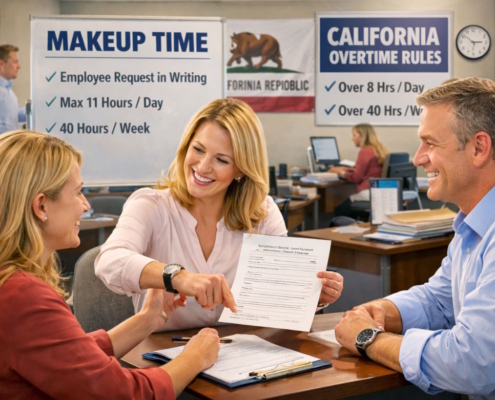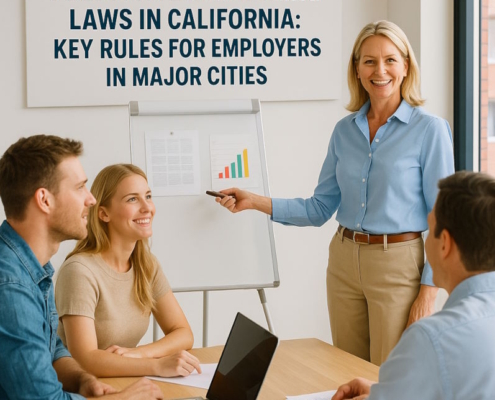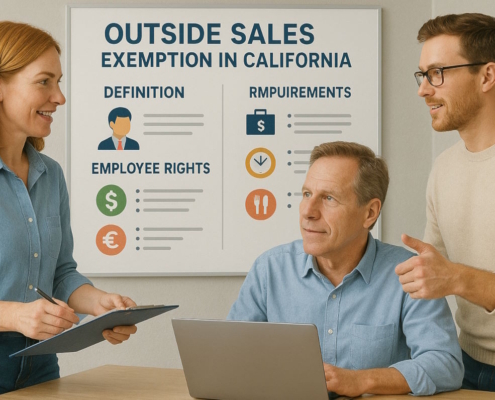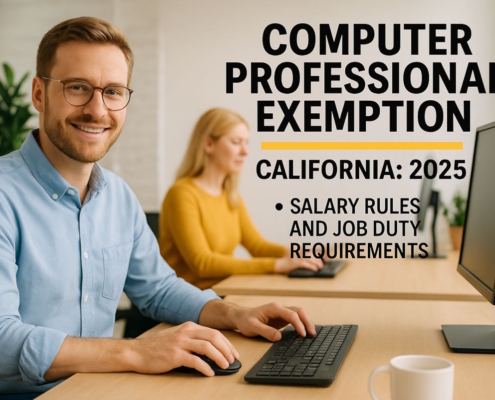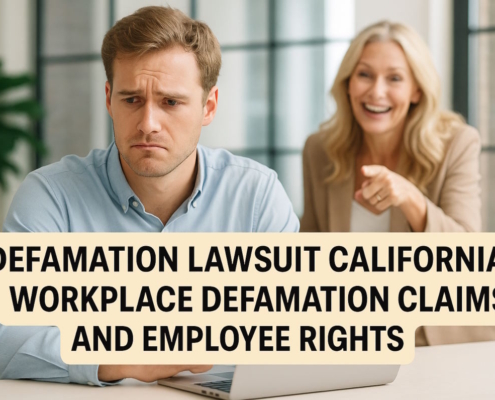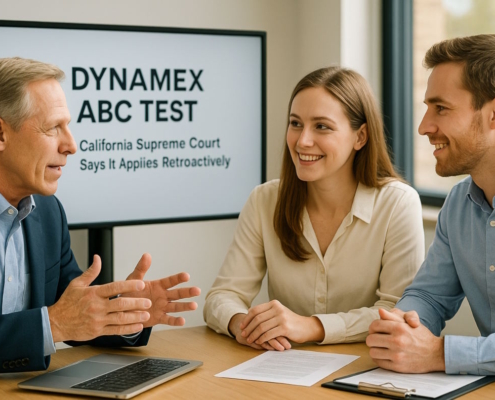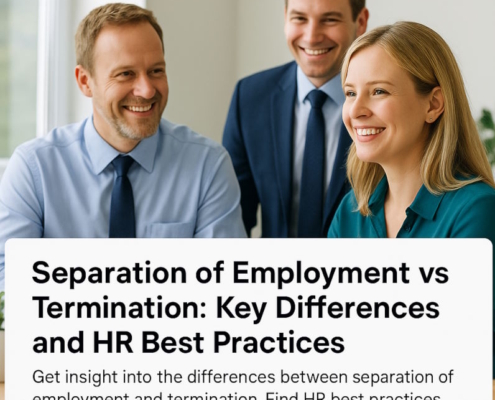Overview of Lawsuits against Public-Sector Employers
In employment law, public sector employee representation has distinctive challenges and complexities from the ones found in the private sector. This has been one of the disparities that often make California employment lawyers to not eager in public sector employment suits. One of the primary reasons for this hesitancy is the complex labyrinth of regulations, statutes, and procedural subtleties that inevitably come along with public employment, and can be rather intimidating and convoluted as opposed to the generally straightforward nature of business laws relating to private-sector jobs.
Understanding the Intake Process
The magic component of an effective presentation of the public sector employees is an incredibly comprehensive intake system. Lawyers need to get themselves familiar with these various rules and procedures that distinguish this industry. This entails knowledge of the administrative requirements, the need to use all remedies before going for litigation and the several periods of limitation that one needs to observe. The details of employment contracts that include Memorandum of Understanding, Personnel and Civil Service Rules, and other agency-specific rules much contribute to this understanding. These components make precise timing possible for legal representation involved in the calculation and management of important deadlines.
Handling Federal Discrimination Claims
Like the private sector, federal workers have protections under the different laws of employment. Still, federal employment covers more special rules and statutes applied specifically to the civil service employees—those workers removed from military servants of the executive, judicial, and legislative branches.
The Role of EEO Counselors
The initial action to take by a federal employee suspecting discrimination includes getting in touch with an agency EEO counselor. This should be done not later than 45 days from the date of the alleged discriminatory act in accordance to 29 C.F.R. § 1614.105(a)(1). The role of the EEO Counselor is multifaceted: informing about the EEO process, trying informal resolution, or giving choices such as an EEO counselor or alternative dispute resolution (ADR) like mediation.
If mediation and counseling do not result in resolving the issue, then the affected employee shall proceed with a formal discrimination complaint through the agency’s EEO Office within 15 days from the day of notice on preliminary notice by EEO Counselor.
The Complaint Process
The formal complaint then goes to the agency and is accessed by the agency for procedural merit. When the complaint is passed over to the agency, there are 180 days to investigate the problem. Post-investigation, the employee is presented with two options: request for an EEOC Administrative Judge hearing or request for a discrimination finding from the agency.
Administrative Judges and Appeals involved
This procedure, which is done either in writing or by using the EEOC Public Portal, should be initiated within 30 days from the receiving of hearing rights. The EEOC is appointed Administrator Judge (AJ) to preside over the hearing process where the hearing is not public and relaxed rules of evidence is adopted.
The AJ’s decision, which is made in 180 days, leads to an agency issuing a final order. In this order, the complainant is meant to know the agency’s position on the AJ’s decision and their entitlements to appeal to EEOC or to file a civil lawsuit. The complainants are also entitled to appeal the final order of the agency no later than 30 days after it had been issued, at the EEOC’s Office of Federal Operations.
Suing a federal agency
Before filing a lawsuit, federal employees must go through the administrative complaint process. It is within various specific points that a complainant is deemed to have exhausted the administrative remedies, hence able to file a lawsuit within the federal district court. These are either cases where 180 days have passed from the filing of a complaint and no decision has been made, commencements of the agency’s decision or delays in the EEOC’s decision after the appeal.
Claims Against California State, County, and City
On the other hand, employees working in state, county, and city agencies in California are usually not required by law to first fully use internal administrative processes for discrimination complaints such as federal employees. Nevertheless, these agencies generally have Equal Opportunity mechanisms that can be used by employees who are already working for the respective federal bodies. This alternative can be especially favorable as it initiates an official inquiry and can provide opportunities for mediation or other types of resolution. The efficacy of using these internal procedures may be questionable for agencies depending on their size as well as on the level of independence of the investigators working there.
Right-to-Sue Letter
All employees whether current or former, can bypass agency review completely by obtaining a ‘right-to-sue’ letter from the Department of Fair Employment and Housing (DFEH) or the EEOC for all federal court cases. This notice gives the authority to start an action, alleging discrimination, whatever the state Superior Court or United States District Court, even if the agency’s internal administrative procedures were followed.
Administrative Procedures in Employment Litigation
In the case of litigating against public agencies, the plaintiff is often compelled to use up the administrative remedies before filing for a suit. Frequently, a DFEH complains is at times filed, at one year of suspected illegal act. The claims, being outside the jurisdiction of the Fair Employment and Housing Act (FEHA), such as whistleblower claims, require that all internal administrative procedures available be exhausted and a government claim filed. It’s important to do this in order to be able to rebut the defense that the available administrative remedies were not exhausted, which can work against the client’s case.
Internal Processes and Due Process Rights
Actions of such great importance that as termination or heavy sanctions that cause specific internal proceedings. Employees in the public sector have procedural rights that the employer must adhere to. Some of these rights are the right to receive notice of proposed disciplinary action and to have a chance for response before any actions. This procedure is commonly called a proposal for federal workers and a Skelly hearing for public sector workers in California after an influential California Supreme Court ruling.
Procedures for Appealing Discipline
Federal Employees
The Merit Systems Protection Board is an independent entity located in the Executive Branch that guards the merit systems of the federal. Personnel actions, which MSPB adjudicates, include, but not limited to, demotions, furloughs, removals, suspensions, among other types of discipline. It also has jurisdiction over complaints of discrimination in relation to employment-related decisions.
State Employees
Accordingly, the state employees, who work in California, are to appeal the disciplinary actions to the State Personnel Board, adhering to the procedures and rules, which are provided by the State Personnel Board Hearing Manual. This includes the grievance against punitive acts resulting in changes in the place of work.
County Employees
Civil service system is also available for county employees in terms of appealing discipline. Legal representatives should have a clear understanding of the provision of the rules of civil service that apply within the county, while being aware of useful MOUs and policies that may be relevant during the investigations. In a recent case, Terris v. County of Santa Barbara, the matter has emphasized the necessity of administrative attack on discrimination and whistleblower claims before resorting to superior court.
Conclusion
The management of litigations that involve public bodies as employers calls for intense knowledge of the complicated and diverse processes that are in use within the federal and state or local fronts. One of the key steps in this process is that of exhausting administrative remedies, which is typically faster and in many instances more efficacious than going through the litigation process. The lawyers working on behalf of public employees should know all the subtleties of such demands, including timeliness, internal order, and peculiarities of federal or state law’s provisions. By having an in-depth understanding of these processes and directing them in a way that reflects a strategic path, legal representatives of their clients have an effective argument on public-sector employment cases.




